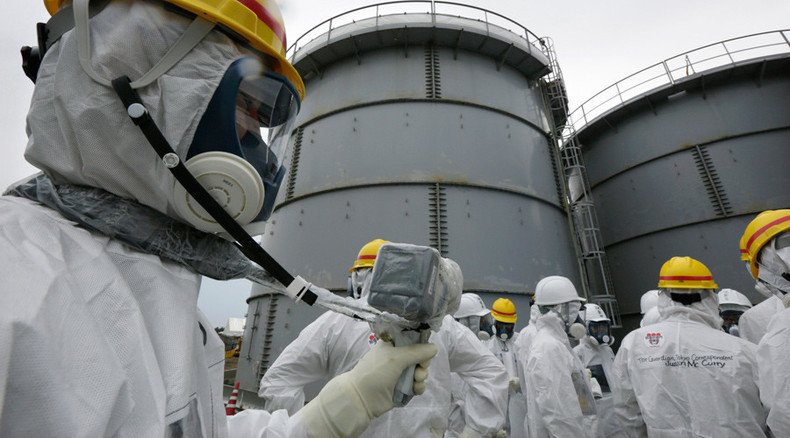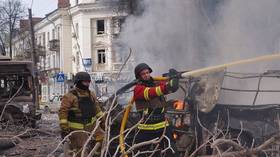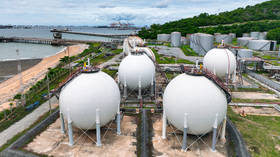Fukushima disaster was preventable, new study claims

Fukushima, the worst nuclear disaster in Japan’s history was preventable, a new USC study claims. Design problems, negligence and inadequate pre-tsunami surveys all contributed to the failure that led to the nuclear catastrophe, the study claims.
According to the research carried out by the University of Southern California, one of the main faults was the decision to install critical backup generators in low-lying areas, as this was the first place the 2011 tsunami would strike, following the massive earthquake.
#Fukushima nuclear plant safety at risk, 170,000 flee homes after floods hit Japan http://t.co/yE6QbT6H6vpic.twitter.com/jQnD4Qq89S
— RT (@RT_com) September 10, 2015Backup generators are a key part of any nuclear power plant – they are essential to cool the plant in the event of power loss, in order to prevent a reactor meltdown. These generators were the first to be affected by the disaster, which the author describes as “a cascade of industrial, regulatory and engineering failures.”
Unable to cool itself, the Fukushima Daiichi power plant’s reactors fell like dominos. “What doomed Fukushima Daiichi was the elevation of the EDGs (emergency diesel generators),” the authors claim. One such generator was installed in the basement, while the others were just 10 and 13 meters above sea level – an unacceptably low height, according to Costas Synolakis of USC’s Viterbi School of Engineering in Turkey.
The research, co-authored by Utku Kanoglu of the Middle East Technical University in Turkey, was published in the journal Philosophical Transactions of the Royal Society.
‘#Fukushima lessons: Any notion that nuclear power is clean is obsolete’ (Op-Edge) http://t.co/XCcBX1nzDSpic.twitter.com/UujdXnaz4G
— RT (@RT_com) April 18, 2015The need for the study was pressing as the majority of analysis carried out regarding the disaster has focused on the clean-up efforts and its management. Very few have actually discussed the preventative measures, which were never followed, according to Synolakis, who also outlines a mixture of regulatory failures and ignored warnings as causes of the catastrophe.
The Tokyo Electric Power Company (TEPCO), the plant’s operator, already stands accused of a multitude of mishaps and a lack of proper contingency measures to deal with the disaster. A series of calamities with wastewater management and nuclear waste disposal have hampered cleanup efforts, which are projected to last for decades.
The authors mentioned that TEPCO’s lack of foresight was a root cause of the disaster that followed.
Firstly, the company reduced the height of the coastal cliffs where the plant was built, underestimating the height of a potential tsunami that could hit the plant. It also relied on inaccurate data and imprecise modeling.
READ MORE: US nuclear plants ‘must be better equipped for offsite disasters’
TEPCO estimated that the water from an event such as the 2011 tsunami would not rise above 6.1 meters – a figure associated with low-resolution studies of earthquakes measuring 7.5 on the Richter scale. This data was used despite sufficient evidence that an 8.6 quake could easily strike the area. Two separate calculations from 2008 predicted that waves could reach a height of 8.4 meters or even 10 meters, were also entirely possible.
Over 700 Fukushima waste bags swept away by torrential floods
http://t.co/RLrW7lVXGypic.twitter.com/trDRS8QWKN
— RT (@RT_com) September 19, 2015That figure was, of course, dwarfed by the 2011 tsunami, with its monster 13 meter waves.
The authors mentioned that even Chile’s huge earthquake in 2010, which measured 8.8 on the Richter scale, did not prove to be a wake-up call for TEPCO. The company carried out additional analysis, but only believed waves from a possible tsunami could reach a height of 5.7 meters. This came as some scientists on the team argued that the threshold should be much higher.
“The problem is that all of TEPCO’s studies were done internally; there were no safety factors built in the analysis, which anyway lacked context. Globally, we lack standards for the tsunami-specific training and certification of engineers and scientists who perform hazard studies, and for the regulators who review them, who can in principle ensure that changes be made, if needed,” Synolakis stated.
At the same time, in an official comment given to RT, TEPCO claimed that it improved its “safety strategies for both hardware and software” and will act as “a nuclear operator that continuously improves safety to unparalleled levels by enhancing safety levels on a daily basis while always keeping the Fukushima Nuclear Accident in mind.”
“TEPCO will continue to improve nuclear power safety through the experiences and lessons learned from the Fukushima Nuclear Power Station accident,” the company’s spokeswoman, Yukako Handa, said in a statement addressed to RT.
However, the company also admitted that “the lack of safety awareness, technical skills and communication skills” had caused the Fukushima accident, but it claimed that “there has been marked improvement in these areas.”
Meanwhile, the clean-up efforts at the plant are continuing. The operation was mired in further controversy after some 700 bags containing material from the stricken power plant were washed away during floods caused by Tropical Storm Etau in September.
As the decontamination efforts continue, TEPCO also reported that groundwater, which contained low amounts of radioactive material, had been dumped into the Pacific Ocean.













